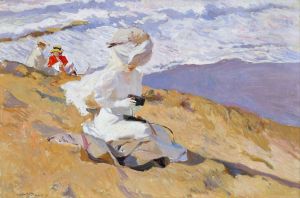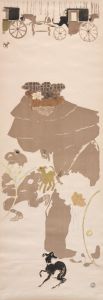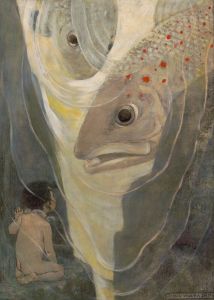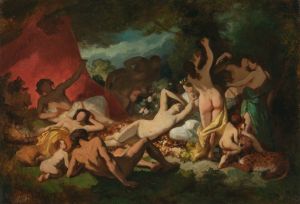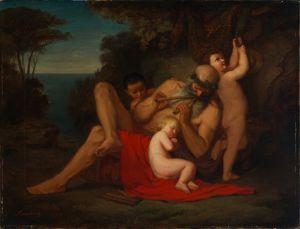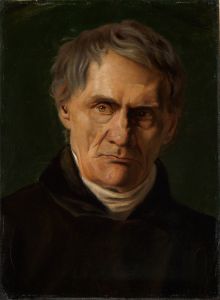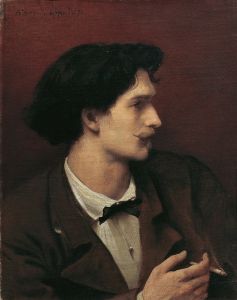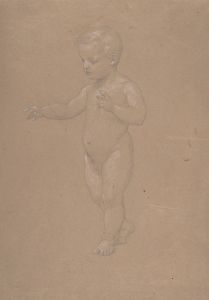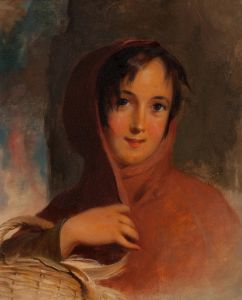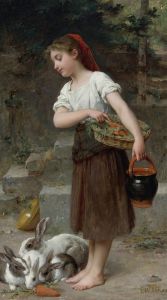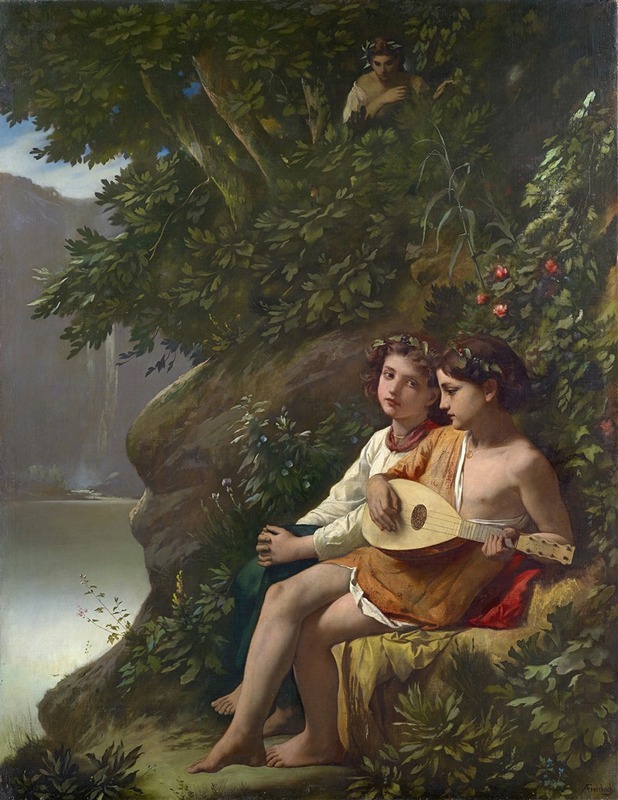
Children Making Music Overheard By A Nymph
A hand-painted replica of Anselm Feuerbach’s masterpiece Children Making Music Overheard By A Nymph, meticulously crafted by professional artists to capture the true essence of the original. Each piece is created with museum-quality canvas and rare mineral pigments, carefully painted by experienced artists with delicate brushstrokes and rich, layered colors to perfectly recreate the texture of the original artwork. Unlike machine-printed reproductions, this hand-painted version brings the painting to life, infused with the artist’s emotions and skill in every stroke. Whether for personal collection or home decoration, it instantly elevates the artistic atmosphere of any space.
Anselm Feuerbach was a prominent German painter of the 19th century, known for his classical style and depictions of mythological and historical subjects. One of his notable works is "Children Making Music Overheard By A Nymph," which exemplifies his interest in classical themes and his skill in rendering figures with a sense of grace and serenity.
Feuerbach was born on September 12, 1829, in Speyer, Germany, into a family with a strong artistic and academic background. He studied at the Düsseldorf Academy and later in Munich, where he was influenced by the works of the Old Masters. His education continued in Paris, where he was exposed to the works of Eugène Delacroix and Gustave Courbet, which further shaped his artistic development. Feuerbach's time in Italy, particularly in Venice and Rome, was crucial in solidifying his classical style, as he immersed himself in the study of Renaissance art and ancient Roman culture.
"Children Making Music Overheard By A Nymph" reflects Feuerbach's fascination with classical antiquity and his ability to blend mythological elements with a sense of realism. The painting depicts a serene scene where children are engaged in making music, seemingly unaware of the presence of a nymph who observes them. This composition highlights Feuerbach's skill in creating harmonious and balanced scenes, with a focus on the beauty of the human form and the natural environment.
Feuerbach's work is characterized by its subdued color palette and the use of light to create a soft, atmospheric effect. In "Children Making Music Overheard By A Nymph," these elements are evident in the gentle interplay of light and shadow, which enhances the tranquil mood of the scene. The figures are rendered with a sense of idealized beauty, reflecting Feuerbach's admiration for classical art and his desire to capture the timeless qualities of mythological subjects.
Throughout his career, Feuerbach was associated with the German art movement known as the "Deutsch-Römer," or German Romans, a group of artists who sought inspiration from classical antiquity and the Italian Renaissance. His work was highly regarded during his lifetime, and he held a professorship at the Academy of Fine Arts in Vienna. Despite his success, Feuerbach's career was not without challenges, as he often struggled with the changing tastes of the art world and the rise of new artistic movements.
Feuerbach's legacy is marked by his commitment to classical ideals and his influence on subsequent generations of artists. His works, including "Children Making Music Overheard By A Nymph," continue to be appreciated for their technical skill and their ability to evoke a sense of timeless beauty. Today, Feuerbach is remembered as one of the leading figures of 19th-century German painting, and his contributions to the art world remain significant.
In summary, Anselm Feuerbach's "Children Making Music Overheard By A Nymph" is a testament to his mastery of classical themes and his dedication to capturing the beauty of the human form. The painting exemplifies his ability to blend mythological elements with a realistic portrayal of figures, creating a harmonious and evocative scene that continues to resonate with audiences.





